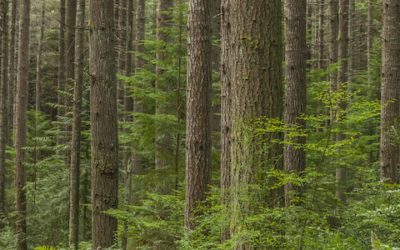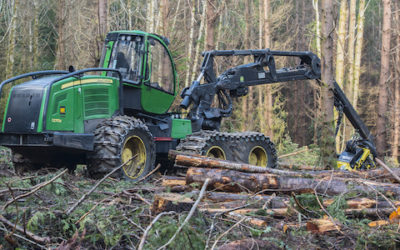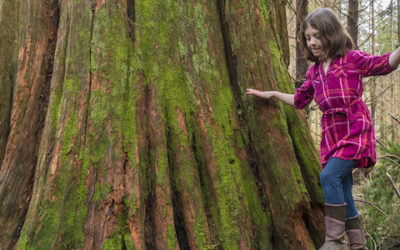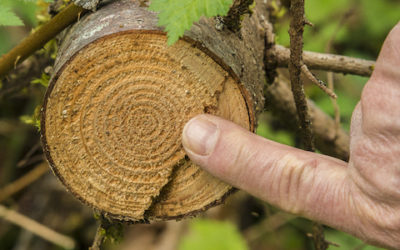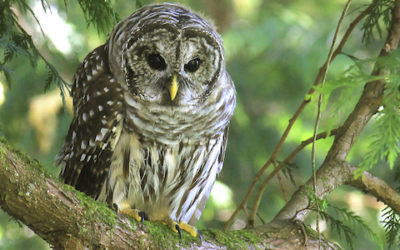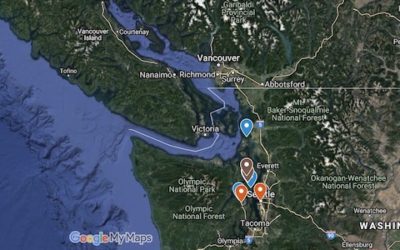NURSE LOG
by Sharon Pegany, Winter 2018
photo by John F. Williams

NURSE LOG
By Sharon Pegany, Winter 2018
above photo by John F. Williams
Fallen trees and decaying stumps lie on the forest floor in the midst of their thriving offspring. Much like beloved elders gone before, the trees on the ground have given up active living, but are still very much present in other ways. Known as nurse logs or stumps, the chief function of the tree has shifted from photosynthesis, transpiration, and reproduction to more of a supporting role for the health of the forest. After falling, the trees provide nourishment and stability for the forest life that remains and, in some ways, support more life in death than they did while alive. Interestingly, as the once magnificent tree melds into the folds of the forest floor, it is dependent on a plethora of natural conditions in order to give back to the forest community in such a unique way.
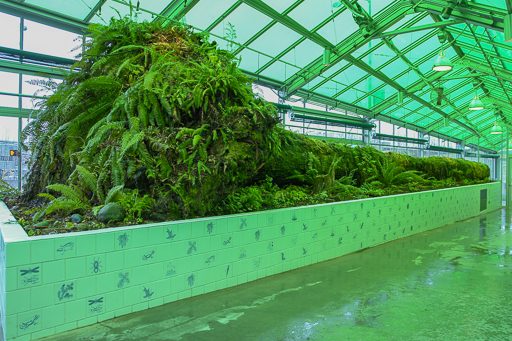
photo courtesy of the Seattle Art Museum
To explore a real nurse log and the conditions supporting it, Seattle artist Mark Dion was commissioned by Seattle Art Museum to create an unusual forest exhibit right in downtown Seattle at the Olympic Sculpture Park. Entitled Neukom Vivarium, the exhibit features a 60-foot fallen hemlock tree taken from its natural forest setting and placed in a specialized greenhouse environment that is carefully monitored. Visitors can observe the workings of a nurse log and ponder the unique conditions that enable it to support bacteria, lichen, moss, fungi, plants, and insects within its decaying frame. The installation fuses art and science as it invites us to ponder not only the complex systems, processes, and cycles found in our beautiful forests, but to enjoy nature’s architecture as art.
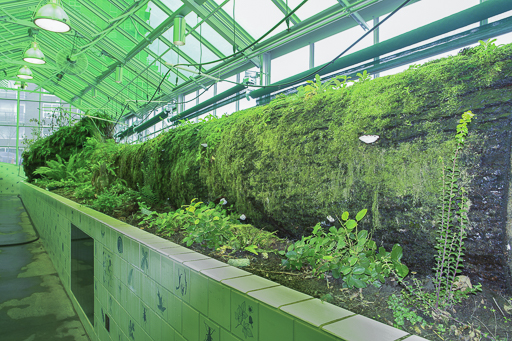
photo courtesy of the Seattle Art Museum
The next time you enter one of the forests rimming the Salish Sea, remember you are in a living gallery with “works” that are ancient and constantly changing. Watch for fallen “elders” and find delight in observing the abundant life they nurture and sustain as one life gives way to others.

Sharon Pegany is an educator and citizen scientist who loves to indulge her insatiable curiosity for the natural world. After teaching inside elementary classrooms for over 30 years, she now spends her days outside exploring, learning and encouraging others to wonder about sky, sea, and land through shared hikes, writing, photography and art. Wander with her through the contrasting naturescapes of desert, ocean and forest at pacificwondertracker.com
Table of Contents, Issue #2, Winter 2018
Forest Stages
Photo Essay by John F. Williams, Winter 2018 Photos & video by John F. Williams except where notedPhoto Essay By John F. Williams, Winter 2018 Photos & video by John F. Williams except where notedwhy does the forest occasionally change character as you travel...
Why Thin
by Arno Bergstrom, Nancy Sefton, Winter 2018 Photos & video by John F. Williams except where notedBy Arno Bergstrom, Nancy Sefton, Winter 2018 Photos & video by John F. Williams except where notedhave you noticed how the forest changes as you follow the...
Stump Stories
Photo Essay by Christina Doherty & John F. Williams, Winter 2018 Photos & video by John F. Williams except where notedBy Christina Doherty & John F. Williams, Winter 2018 Photos & video by John F. Williams except where notedtrees dieMaybe they die...
Rings
Musings by John F. Williams, Winter 2018 Photos & video by John F. Williams except where notedMusings by John F. Williams, Winter 2018 Photos & video by John F. Williams except where notedTree rings can be counted when a recently cut tree is encountered in...
Who Cooks
by Leigh Calvez, Winter 2018 Photos & video by John F. Williams except where notedphoto by Nancy Seftonphoto by Nancy SeftonBy Leigh Calvez, Winter 2018 Photos & video by John F. Williams except where noteda family of barred owls flew into my neighborhoodI...
Map-2
Winter 2018Winter 2018The button below will open a Google map with some markers to show the locations of landmarks related to topics discussed in this issue #2 of Salish Magazine. For example, you can find some parks where you can see big, old stumps or different...

